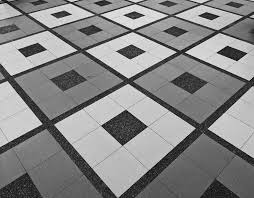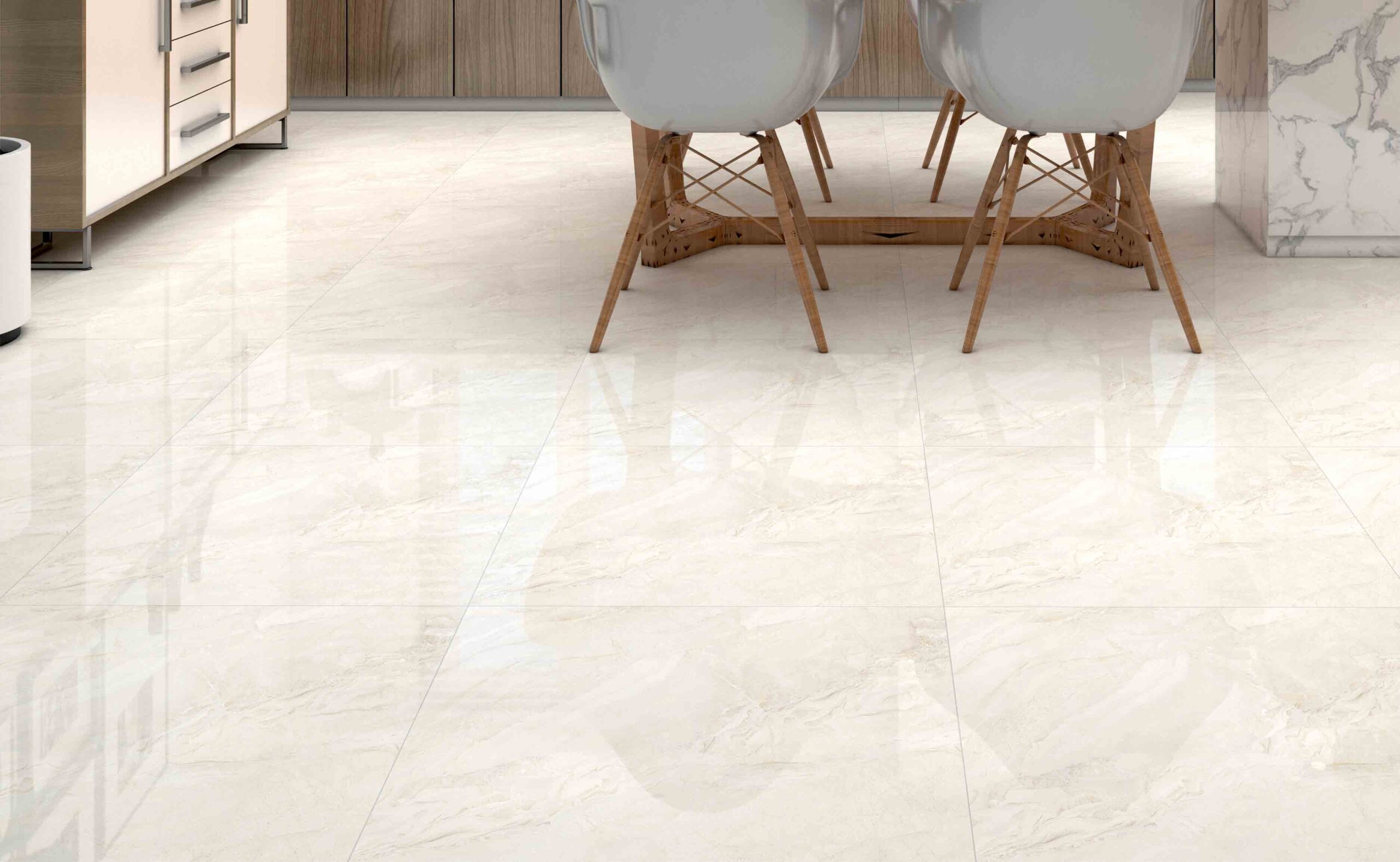Take care of your floor tiles with a soft touch and a few clever cleaning procedures to keep your tiles and grout looking new. Discover how to clean floor tiles and grout, which cleaning products and equipment to use, and how often your floors should be cleaned.
Your kitchen or bathroom is not completely clean until the floors have been cleaned. While you do not need to do this task every time you wash down the counters, it is important to keep an eye out for symptoms of dirt or grime on your tile flooring. A hazy coating on the floor or unclean grout are both symptoms that your flooring needs more than a quick cleaning. When cleaning your floor tiles, be careful to use the right approach for your kind of tile, since suggested cleansers and mops differ by material. These are the finest methods for cleaning floor tiles regardless of their material composition.
How to Clean All Types of Floor tiles
You would not clean a stainless-steel refrigerator with an enamel cleaner. The same holds true for your tile. While floor tiles are quite durable, several types of tile need specific maintenance. While ceramic and porcelain floor tiles need little maintenance, rougher tiles such as slate, marble, granite, or limestone require customized care and sometimes specialized cleansers.
Ceramic and Porcelain Tile Floor Cleaning
Ceramic and porcelain tiles are very durable, and with a few simple cleaning instructions, these kinds of flooring can remain gleaming. To clean ceramic and porcelain tile, follow these easy steps:
1. Remove loose debris: Sweep or sweep your floor tiles on a regular basis to keep them looking new. Although ceramic floor tiles are dirt-resistant, sand and grit may degrade the glazed surfaces. learn more about floor tiles at http://hawthorneatconcord.com/12-best-subway-tile-ideas-for-your-bathroom-and-kitchen/
2. Use the proper floor mop: Clean tile with a light detergent and clean water, rather than a sponge mop. These mops are ideal for cleaning tile since sponge mops have a tendency to drive unclean water into grout lines, making them more difficult to clean. While mopping, be careful to replace the water often; unclean water produces a foggy floor.
3. Keep an eye out for tile stains: If you see a stain, first establish what sort of material caused it. Use the proper cleaner for the stain for the most effective clean.
4. Keep an eye out for soap residue: If your tiles continue to seem foggy after washing, you may be dealing with soap residue. Use a nonabrasive all-purpose cleaner to remove the film. On ceramic or porcelain floor tiles, you might alternatively use a DIY cleaner containing a moderate acid (such as fresh lemon juice) (but never on stone tiles).
5. Dry the tiles: Do not allow standing water on your glazed floor tiles to dry naturally, since this will result in water stains. Take care of this by quickly drying the floor with a clean, lint-free cloth after washing.

Editor’s Recommendation: Take care of your knees and dry tiles in the simplest manner possible: Use your foot to move the cloth across the floor.
Cleaning Stone Floor tiles
When dealing with natural stone tiles such as slate, granite, or marble, use caution. Chemicals in conventional cleaners have been known to cause harm to the surface of these materials. Rather than that, clean your stone tiles using natural stone cleansers.
- Slate Tiles: You may also use a mild detergent on slate floor tiles, as long as the detergent does not contain any acidic ingredients, such as lemon or vinegar. If your slate tile is covered, immediately dry it with a soft towel to eliminate water marks.
- Marble Tile: While marble is an aesthetically pleasing material, it is also a high-maintenance material. Avoid using anything with an acidic PH level to clean marble tile. Cleaners containing lemon or vinegar should be avoided, since they have the potential to etch the tile’s surface. Additionally, avoid anything that might harm the marble, such as bristly brushes or scouring powders.
- Granite Tile: Similar to slate and marble floor tiles, granite tile should be cleaned with a pH-neutral mild detergent. Abrasive cleaners have a tendency to leave streaks or discoloration on the tile. Additionally, you may choose to buff a polished granite floor to maintain its luster and cleanliness. learn more about pH-neutral mild detergent by clicking here.
The Best Way to Clean Resistant Floor tiles
Resistant tile, which is made of linoleum, vinyl, cork, and rubber, is an excellent choice if you want a surface that is easy on the feet and requires no care. When cleaning your resilient floor tiles, keep the following guidelines in mind:
• Vinyl Tile: This very durable flooring option is also quite simple to maintain. Simply sweep or vacuum debris from the floor and mop with a vinyl cleaning solution or a solution of water and vinegar. Never use an abrasive cleaner or scrubbing tool on vinyl, as this may cause the surface to scratch.
• Linoleum Tile: Often confused with vinyl flooring, linoleum is a distinct substance with unique maintenance needs. Following sweeping or vacuuming, clean the linoleum tile using a linoleum flooring cleaning solution or a mix of Borax and water. Rinse well and allow the floor to dry. Apply a layer of wax or liquid wax and buff to a sheen every 3 to 6 months to preserve your linoleum flooring.
• Cork Tile: The cleaning care required for cork floor tiles varies according to the finish on the tiles. If the cork surface has been treated with polyurethane (which the majority of cork floors are), clean it with water and a little detergent or white vinegar, then thoroughly rinse. If the cork is not polished or waxed, follow the polyurethane cleaning procedures but add solid or liquid wax once the tile dries.
Editor’s Tip: Never clean any of these tile kinds with a steam mop. They are not meant to withstand high temperatures or excessive wetness.

How to Remove Grout from Tiles
The true key to beautiful floor tiles is clean grout. Due to the porous nature of grout, which collects grease and other stains, it may be difficult to maintain clean. How to restore the appearance of your grout:
1. Create a homemade grout cleaner: Rather than purchasing commercial cleaners, create a paste of baking soda and water.
2. Scrub grout: Apply it to the stain, let it lie overnight, and then scrub the stain with a firm nylon brush in the morning (a metal brush will damage the grout). Repete as needed.
3. Seal grout: Coat the grout with a silicone-based sealant to protect it from future stains. This procedure is most effective when performed 10-14 days after the grout has been laid or refreshed.
